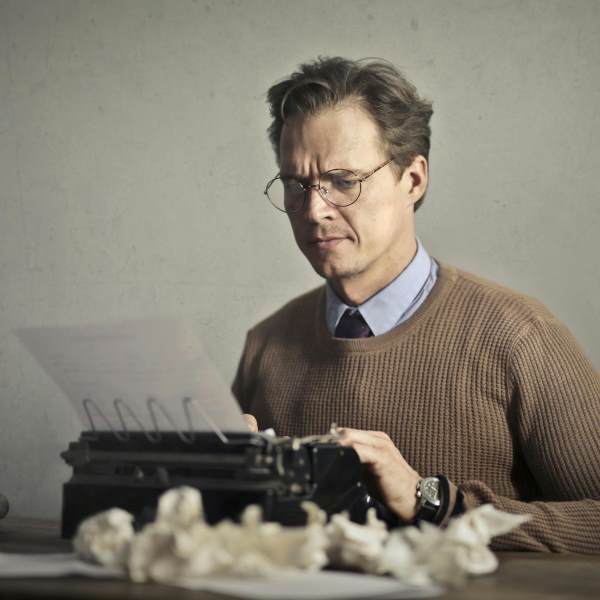Search intent: what people really want to know
Queries like how long does sperm live in mouth, does sperm die when it hits air, how fast does sperm dry, or how long does sperm live in a condom are usually about risk assessment. People want a simple answer to a messy scenario.
There is one consistent rule: sperm survival is mostly about moisture, temperature, and whether sperm can actually reach the cervix in the fertile window. Without those conditions, the chance of pregnancy is usually very low.
Sperm vs. semen: the difference changes the answer
Sperm are the cells. Semen is the fluid that carries them. Many questions use the word sperm, but what matters is whether sperm remain motile and intact in that fluid and whether they reach a body environment where motility can be maintained.
Outside the body, semen drying is often the main reason sperm stop being viable. Once semen dries into a thin film, sperm lose motility quickly and are no longer realistically capable of fertilization.
The three factors that decide survival in most real-life situations
- Moisture: sperm usually remain motile only while semen stays wet; drying often ends viability fast.
- Environment: cervical mucus around ovulation can protect sperm; saliva, soap, bleach, and chlorinated pool water are unfavorable.
- Path to the cervix: sperm being alive somewhere is not enough; pregnancy requires timely transfer into the vagina and a route toward the cervix during fertile days.
How long do sperm live in the female reproductive tract?
Inside the body, survival time is not a single number. It varies with cycle timing and cervical mucus. Around ovulation, cervical mucus can become more supportive and can help sperm survive and move. Outside that fertile window, the vaginal environment tends to be more acidic and less sperm-friendly.
For a practical clinical definition of infertility timelines and when evaluation is often considered, the CDC overview is a clear reference: CDC: Infertility FAQ.
- Vagina and cervix in the fertile window: up to about five days in favorable conditions.
- Uterus and fallopian tubes: commonly two to five days, depending on timing and conditions.
- Vagina outside fertile days: often hours rather than days.
Sperm survival by environment: realistic time ranges
- In air, on hands, on skin, on clothing, on bedding: usually only until semen dries; thin traces can dry in about 1–5 minutes, after which fertilizing ability is effectively gone.
- In the mouth and saliva: typically seconds to a few minutes; saliva and osmotic stress reduce motility quickly.
- In water (tap, shower, bath, ocean): usually very brief because of dilution and osmotic stress.
- In a chlorinated pool: typically very brief; chlorine adds additional damage to cell membranes.
- In a condom or collection cup at room temperature: as long as semen stays wet, often minutes to under 1–2 hours; this does not create a pregnancy pathway by itself.
- In a lab sample held near body temperature: many labs aim to analyze or process within about an hour; WHO Laboratory Manual (2021).
- Cryostorage: long-term storage is possible in liquid nitrogen at about −320.8 °F; home freezers are not a substitute.
How long does sperm live in the mouth and saliva?
This is one of the most common search clusters. The short answer is that the mouth is not a supportive environment for sperm. Saliva contains enzymes, the environment is not designed to protect sperm membranes, and dilution happens quickly.
Even if some sperm remain briefly motile, a pregnancy pathway from the mouth does not exist in practical terms. The question usually comes from worry after oral sex, but sperm would still need to reach the vagina and cervix at the right time in the cycle, which is not a realistic route.
Does sperm die when it hits air? What drying really does
Air exposure matters mainly because semen dries. Sperm rely on a stable fluid environment. Once semen becomes a thin dry film, motility drops sharply and sperm are no longer realistically capable of fertilization.
How fast semen dries depends on amount, surface, and airflow. A thin smear on skin or a surface can dry within minutes. Fabric absorbs fluid and speeds drying even more.
Does sperm die when it dries on skin?
Dried semen on skin is not a realistic pregnancy risk. The key conditions for pregnancy are fresh, motile sperm, immediate transfer into the vagina, and timing in the fertile window. Drying usually removes the first condition quickly.
If you are worried about a specific situation, focus on what happened before drying: was semen still wet, was there direct contact with the vaginal opening, and was it during fertile days. If not, pregnancy is unlikely.
How long does sperm live in a condom?
Inside a condom, semen may stay wet longer than on skin because evaporation is limited. That can preserve motility for a short time, often minutes to under 1–2 hours, but the number is not a guarantee and declines over time.
What matters for real-world pregnancy risk is not how long sperm can remain motile in a condom, but whether semen was transferred into the vagina near the cervix during fertile days.
Can sperm live in a condom for 12 hours?
This query often shows up when someone finds an old condom or worries about delayed exposure. Even if some cells were briefly motile earlier, after many hours at room temperature motility is expected to drop substantially, and the practical pregnancy pathway still requires timely transfer into the vagina and toward the cervix.
If your concern is contraception failure or semen exposure in the vagina, a clinician can help you think through timing and options. For the general approach to evaluation and fertility questions, ACOG’s overview is helpful: ACOG: Evaluating Infertility.
How long is sperm viable in a cup?
People ask this for home situations and for clinic drop-offs. A cup can keep semen wet, but temperature swings and time still reduce motility. For lab comparability, many protocols aim for analysis or processing within about an hour.
For an accessible explanation of semen analysis and what it measures, the NCBI overview is a practical reference: NCBI Bookshelf: Semen Analysis.
Does tap water kill sperm? Can sperm survive in water?
Water is generally hostile to sperm because of dilution and osmotic stress. Even without chlorine, sperm lose motility quickly when semen is dispersed in water. That is why scenarios like shower water or toilet water are not realistic routes for pregnancy.
What keeps coming up in these searches is a fear of indirect contact. For pregnancy, sperm need a direct path into the vagina and toward the cervix while still motile. Water breaks that chain quickly.
Does chlorine kill sperm? Does bleach kill sperm?
Chlorine and bleach are both harsh on cell membranes and proteins. In practical terms, they inactivate sperm quickly. These questions usually come from pool scenarios or cleaning concerns.
From a real-world risk perspective, the bigger point is still the pathway: even if a tiny number of sperm were briefly alive, dilution, chemicals, and lack of a direct route make pregnancy from these scenarios extremely unlikely.
Temperature and heat exposure: when it matters
Sperm function is sensitive to heat. Short warmth is not always meaningful, but prolonged overheating can reduce motility and may affect DNA integrity. As a practical reference point, sustained exposure around 104 °F can be more clearly unfavorable.
Heat also matters for sample handling. If a clinic requests a specimen, follow their instructions for timing and transport to keep results meaningful.
Environment and tech: underrated heat sources
Laptop on the lap, a phone in a tight pocket, and tight synthetic clothing can raise local temperature and contribute to oxidative stress. Small changes can help: laptop on a desk, take breaks, choose breathable clothing.

Myths and facts: short, critical, concrete
- Myth: sperm can live for 7 days. A realistic upper edge is up to about five days in favorable cervical mucus around ovulation; longer is uncommon.
- Myth: sperm stay fertile a long time in a condom. Motility usually declines and depends on moisture and time; once semen dries, sperm are inactive.
- Myth: sperm survive for hours in open air. Drying usually ends viability quickly, often within minutes for thin traces.
- Myth: sperm live a long time in the mouth. Saliva and the oral environment reduce motility quickly.
- Myth: tap water is neutral. Dilution and osmotic stress generally reduce motility fast.
- Myth: pool water is harmless. Chlorine and dilution make it a poor environment for sperm survival.
- Myth: soap and sanitizer do not matter. Surfactants and alcohol disrupt membranes and proteins quickly.
- Myth: a home freezer preserves semen. Real preservation requires clinical cryostorage at extremely low temperatures.
Legal and regulatory context in the United States
For basic sperm survival questions, law is rarely the core issue. It becomes important when semen is collected, tested, stored, shipped, or used in clinical treatment. In the United States, donor screening and handling of human cells and tissues used for reproduction are shaped by medical standards and federal oversight.
If you are using a clinic or sperm bank, follow their requirements for identification, container type, and timing. If you are considering donor-related logistics, it helps to understand that regulatory frameworks exist for human cells and tissue products and that requirements can differ internationally. A practical entry point is the FDA information on tissue and tissue products: FDA: Tissue and Tissue Products.
When medical evaluation makes sense
- Under 35: consider evaluation if pregnancy has not occurred after 12 months of regular unprotected sex
- 35 and older: consider evaluation after 6 months without success
- Earlier: if cycles are irregular, ovulation seems absent, pain is significant, there are known conditions, or there is concern about semen quality
These timelines are common clinical reference points, and they are reflected in mainstream professional guidance, including ACOG’s patient-facing overview.
Conclusion
Inside the body around ovulation, sperm can sometimes survive for days, occasionally up to about five. Outside the body, survival is usually short and often ends when semen dries, which can happen within minutes in thin traces. Most real-life scenarios become easier to judge when you focus on moisture, timing in the fertile window, and whether there was a direct path to the cervix.

